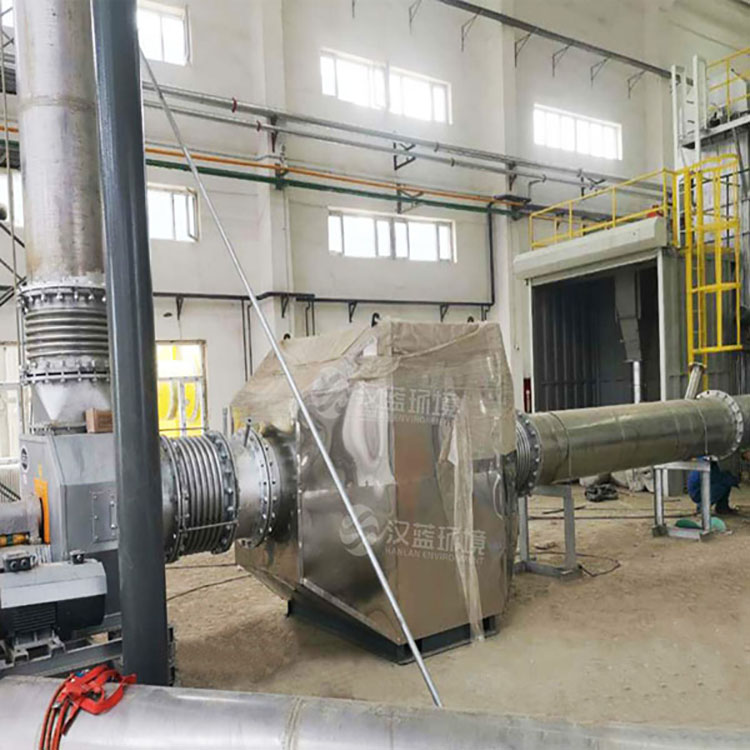 You are here:
You are here:
Hebei Hanlan Environmental Technology Co., Ltd. designed a thermal desorption device tail gas SCR denitration system scheme for a hazardous solid waste disposal center. The SCR denitration system scheme can not only meet the requirements for NOx emission indicators, but also has the advantages of small equipment area, safe and reliable operation, convenient installation and maintenance and long catalyst life, And the characteristics of high denitration efficiency, one-to-one denitration scheme can be designed and customized according to the actual needs of manufacturers.
It can not only be used for supporting new models, but also can be used for renovation of old models,especially suitable for power stations with various types of gas sources such as natural gas, biogas, and gas, as well as oil-fired gas boilers, heating furnaces and exhaust gas treatment devices for exhaust emission purification and other fields.

The exhaust gas of the device is as high as 5000-6000Nm3/h, of which NOx is required to be reduced from 500mg to below 50mg. After installing Wanchun exhaust SCR denitration equipment, this emission target has been successfully achieved and the standard requirements are met. At the same time, this also marks Hebei Han The blue SCR denitration technology has taken a new step in the treatment of NOx in the non-electric field.
SCR (Selective Catalytic Reduction), that is, selective catalytic reduction technology, has strong selectivity, mainly for NOx emission control, and is an efficient NOx treatment technology. The exhaust gas SCR denitration system of Wanchun thermal desorption unit is to react ammonia (NH3) formed by pyrolysis and hydrolysis of urea with NOx under the action of a catalyst to generate non-toxic nitrogen (N2) and water. The reaction principle is as follows:
(NH2)CO + H2O = 2NH3 + CO2
Urea is pyrolyzed and hydrolyzed to generate ammonia gas, which provides raw materials for the reaction.
NH3 and NOx The reaction is as follows:
4NH3 + 4NO + O2 = 4N2 + 6H2O
2NH3 + NO + NO2 = 2N2 + 3H2O
8NH3 + 6NO2 = 7N2 + 12H2O